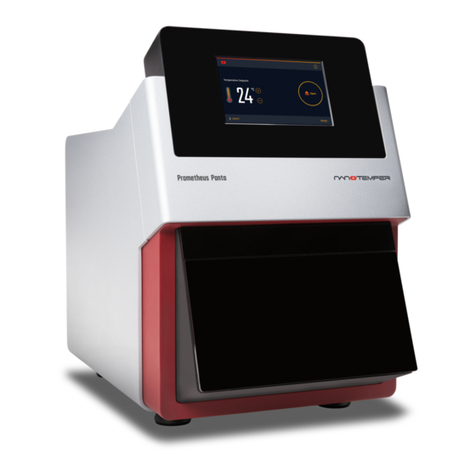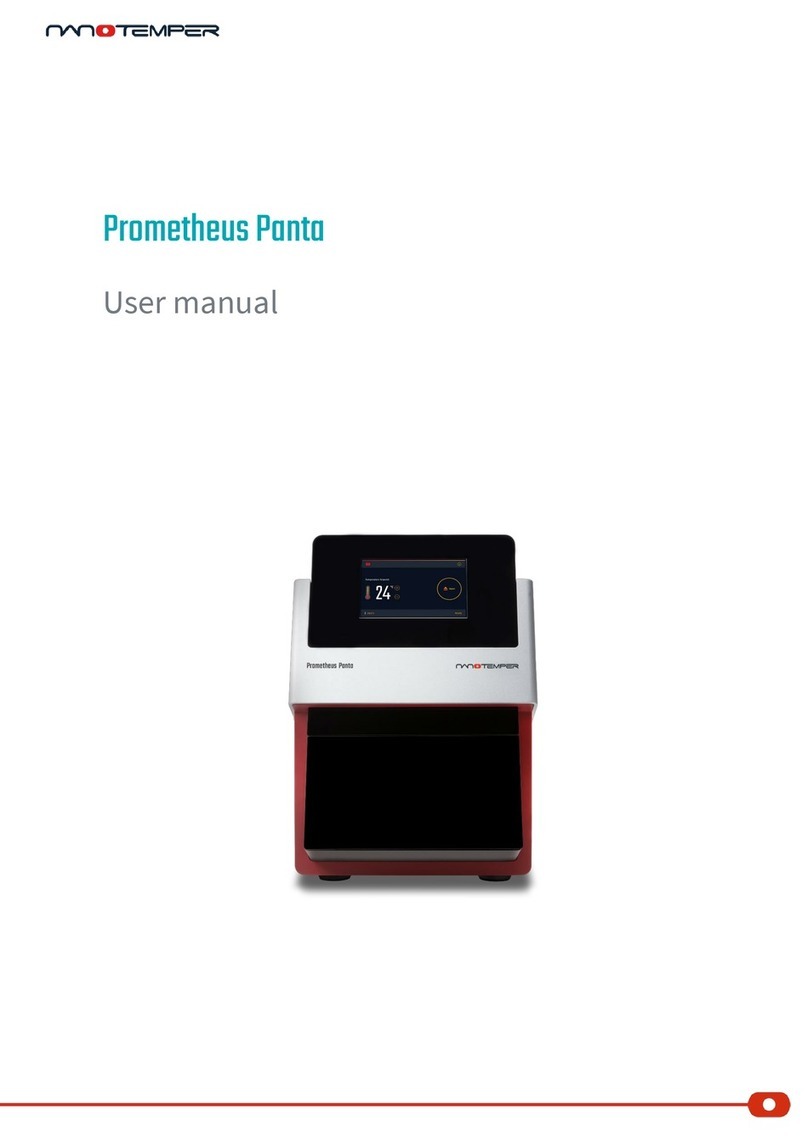4
WARNING! Only operate the Monolith NT.115 instrument with the supplied external power supply
(SPU63-105, Sinpro Electronic Co Ltd or Ael60US12, XP Power LLC or GS90A12-P1M, MeanWell
or GS60A12-P1J, MeanWell). Onlyuse the supplied cables andplugs. If not doing so yourisk electric
shock and fire.
WARNING! Do not operate the Monolith NT.115 with substances and under conditions which cause
a risk of explosion, implosion or release of gases. Only operate the Monolith NT.115 with aqueous
solutions.
CAUTION Ensure that the power plug of the external power supply is easily accessible. The Monolith
NT.115 instrument has to be installed in a way that it does not hinder the access to the external
power supply and its power plug.
CAUTION The weight of the Monolith NT.115 instrument is approx. 24 kg, do not move the
instrument alone (two persons required for transport). If you move the instrument alone it poses a
risk of personal injury or damage to the instrument.
CAUTION The manual opening of the instrument is not allowed. Manual opening poses a risk of
personal injury or damage to the instrument. Contact NanoTemper Technologies service personnel
if you need to open the instrument.
CAUTION Use of controls or adjustments or performance of procedures other than those specified
herein may result in hazardous invisible radiation exposure. The instrument contains an IR-laser
module (invisible laser radiation Class 3B according to IEC 60825-1: 2007). Lasers or laser systems
emit intense,coherent electromagnetic radiationthat has the potential of causing irreparable damage
to human skin and eyes. The main hazard of laser radiation is direct or indirect exposure of the eye
to thermal radiation from the infrared B spectral regions (1,400 nm –3,000 nm). Direct eye contact
can cause corneal burns, retinal burns, or both, and possible blindness. Do not open the instrument
while it is switched on. Manual opening of the instrument during operation poses a risk of personal
injury or damage to the instrument. When the instrument is used as intended it is LASER CLASS 1.
CAUTION Mechanical moving parts within the instrument can pinch or injure your hands or fingers.
Do not touch the instrument while parts are moving.
CAUTION The instrument contains a temperature regulator to control the sample temperatures.
Some accessible parts of the instrument can reach temperatures up to 50°C. Avoid touching the
temperature controlled parts of the instrument for a longer time when you have set the temperature
controller to high temperatures.
CAUTION Only NanoTemper Technologies staff is allowed to service and open the instrument. Turn
off the power switch and unplug the power cord before servicing the instrument, unless otherwise
noted. Connect the equipment onlyto the delivered power source. Do not use extension cords. Have
an electrician immediately replace any damaged cords, plugs, or cables. Not doing so poses a risk
of personal injury or damage to the instrument.





























